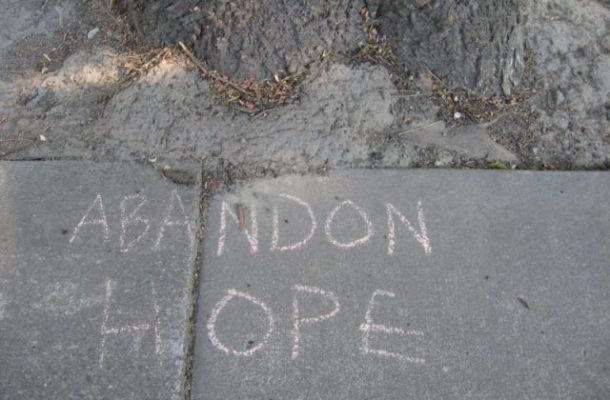Australian border security: hope against hope

Over the last six years, the hopes of asylum seekers on Manus Island and Nauru have been sacrificed by an Australian government policy designed to prevent broader loss of life and maintain the sovereignty of our borders.
Despite government objections, independent politician Kerryn Phelps’ medical evacuation bill passed through the House of Representatives yesterday, and the Senate today. It’s significant not just because it marks the first time in decades that an incumbent government has been defeated on the floor of the House. It also marks the first tangible challenge to Australia’s border security regime, based on an argument that the needs of the few may at times outweigh the needs of the many.
Over the past four years, I have often framed Australia’s asylum seeker public debate as a binary discussion (see here, here and here), but in reality tougher borders has been a rather one-sided affair—at least since the Gillard government reopened offshore processing centres in Nauru and Manus. Since then there’s been general agreement between the Labor Party and the Liberal–National Coalition that irregular boat arrivals must be stopped.
While our border protection strategies have a range of measures from advertisements in source countries, intelligence collection and joint disruption operations in transit countries, boat turnarounds and tow-backs at sea, and offshore processing, they are designed to send one clear message: ‘You won’t come to Australia’.
This message is meant to resonate with asylum seekers and refugees and crush any hope they have of ever making it to Australia. If the number of boat arrivals is the measure of success, then this strategy has been overwhelmingly successful. However, this success has come at a great cost to those caught in the limbo of offshore processing and those charged with making this system work.
Putting those philosophical debates aside, the drivers for the irregular movement of people globally, from human security to economics, are growing, not dissipating. In 2016, the UN High Commissioner for Refugees reported that there were 65.6 million ‘forcibly displaced people worldwide’, 22.5 million refugees and 10 million stateless people. Globally, there are some 767 million people living below the poverty line. In Africa alone, there are some 200 million people aged between 15 and 24, and their number will likely double by 2045.
While those figures are startling, the fact that in 2016 only 189,300 refugees were resettled highlights the scale of the likely demand for irregular migration. Refugee advocates are right when they say that these people face untold barriers that make them desperate and vulnerable.
The complicating factor for government policy changes is that the successful disruption of people-smuggling syndicates appears to have only a fleeting impact on smuggling trends more broadly. The evidence collected in ASPI’s 2017 strategy paper People smugglers globally was that people smuggling is often viewed as a means of supplementing income, as opposed to being a professionalised activity.
Unsurprisingly, then, there are limited barriers to entry into the people-smuggling market, and any void left by the disruption of one syndicate is rapidly filled by another. The fragility of enforcement success against people-smuggling networks supports the argument for policies that are more strategically focused on disrupting demand.
Australia’s experience in this area has illustrated the need for a strong evidence base for such policies. Furthermore, experience has shown that they must involve a whole-of-government approach that brings the full complement of policy levers to bear on the challenge.
While Australia’s ‘Operation Sovereign Borders’ has been a resounding success in dramatically reducing the flow of irregular migrants to Australia by sea, that achievement is brittle. There are still large numbers of refugees and asylum seekers across the region—for example, 13,829 in Indonesia, 163,860 in Malaysia and 593,241 in Thailand. To be fair, many of these people don’t have the means or intent to travel to Australia. But a lack of hope that they will ever be resettled in Australia likely has a marked impact on their selection of a destination.
If there’s no hope, then even the most desperate of asylum seekers or refugees is unlikely to risk coming to Australia. This is, of course, a policy position that neither the Australian Border Force, the Australian Federal Police nor the Department of Home Affairs has control over. With no viable third-party options for the remaining asylum seekers on Nauru and Manus, offshore processing looks unsustainable in the long run.
The content of the Phelps bill, especially with its amendments, does not mean that anyone on Manus or Nauru, now or in the future, will necessarily be resettled in Australia. But if the tweets of such outspoken asylum seekers as Behrouz Boochani and Abdul Aziz Adam are anything to go by, it could spark hope of a future life in Australia in those desperate souls lost across the region and the globe.
Regardless, it does seem rather ironic that the ‘lucky country’ is so heavily invested in fighting hope.
This article was published by The Strategist.
John Coyne is the head of the ASPI border security programme. He spent 20 years as an intelligence professional at tactical, operational, and strategic levels across a range of military, regulatory, national security and law enforcement organisations, primarily in the ASEAN region.














